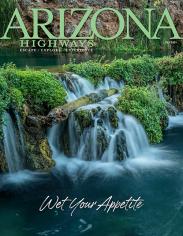Tse’nikani Scenic Road
There’s plenty to see on the Navajo Nation, and that generally means doing plenty of driving. That’s to be expected, given that the tribe’s land covers 27,000 square miles, including much of Arizona’s northeast corner. Thankfully, the in-between stretches are worth seeing, too — including the Tse’nikani (Flat Mesa Rock) Scenic Road, a section of U.S. Route 191 that forms part of a route from Monument Valley to Canyon de Chelly.
